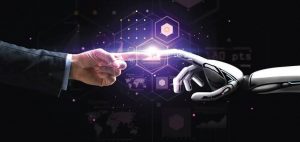What is Usability Testing?
This type of testing is done to check how user-friendly is your software product. In a nutshell, before officially diving into the development of your product, you gather a small set of diverse kinds of end-users that use your product. The testing includes how easy it is for the users to use and understand the application. Besides, how easy it was for them to achieve their objective using the various features of the app.
Usability testing is a test of user experience. Both terms are interchangeable here. Hence, with usability testing, you get feedback from real users that may highlight some points of improvement.
This testing when performed during the initial stages of the design phase not only immediately highlights the elements lacking, but also saves the development time as well. Moreover, the applications itself is saved from potentially being a failure with the target audience.
This brings us to our next question:
Why is Usability Testing So Important?
It is important precisely for the fact that it is the users that make or break the application. If your app isn’t serving the best user experience, your software product has failed already.
So how to determine that what you are developing will satisfy the end-users? By performing usability testing, as mentioned above. Furthermore, it is a test that highlights a feature that is missing or can be improved, or a certain aspect of your app that was completely overlooked by the design team. Hence, it is important to get the right feedback from the right users. Then, you can improve your application until it passes the test.
Usability testing determines the following aspects:
- How useful it is?
- Is it findable?
- Is it accessible?
- Is the application desired by the target market?
- How usable is this software product?
What is the Process of Usability Testing?
Usability testing is made up of 5 phases in total. If we speak generally.
- Planning
- Recruiting
- Usability Testing.
- Data Analysis.
- Reporting
Let’s discuss each phase for you to get a better grip on what usability testing is.
Planning: This is the phase where the usability goals, criteria, and desired outcomes are decided. It is important to have a clear set of objectives in mind. Once all the critical factors are decided upon, they should be assigned to the testers.
During the planning phase, metrics like the demographics of the usability testers, the numbers, so on, and so forth are also laid down.
Recruiting: As the name suggests. This is the phase where the desired testers according to the set demographics are recruited. These testers are real users that match the user personas as well.
Usability Testing: In this phase, the usability test commences.
Data Analysis: The results that are driven by the test are then analyzed. Once they are thoroughly analyzed, then adequate recommendations are made to improve the user experience.
Reporting: The test results and analysis are then reported to the stakeholders or concerned parties that can include the design team, developers, clients, and more.
How Many Users Should Be Involved?
The answer to this question depends on how complex is your application. Besides, looking at the set goals and criteria of the usability test will also help you determine the number of testers that you may require.
However, if your application is on the smaller side and so is your budget, then 5 is a good number.
Now that we have this concern out of the way; what are the advantages that you gain from usability testing, apart from the obvious?
Benefits of Usability Testing
1) Identifying Flaws and Errors Early On
Usability testing helps you find the errors or problems before the end-user does after launch. No one likes to encounter a software product that is ‘buggy’ or starts malfunctioning. Not only that reduces the credibility of your software, but users lose trust within your application and ultimately in your business.
This is why usability testing is so important. It is better to detect any missing or faulty elements/experience within your product before it is launched for the world to see. Moreover, fixing bugs after the product has been developed and launched isn’t cheap. So, you also save a lot of costs by conducting usability testing during the design phase.
2) Increases Conversions
Of course, once the user experience is improved and refined with the help of this test – it reflects within the rising conversion rate. Once a user is satisfied and happy with the interaction he/she is having with your software product, they are more likely to convert as well.
If you have an engaging user interface and even smoother user experience, then you do not have to worry about conversions. Moreover, usability testing, conducted by actual end-users help significantly in improving UI/UX.
3) Saves Company’s Resources
Since usability testing identifies any bugs or missing functionalities early on, it saves the company a lot of money, time, and resources. Because when these issues surface after launch, then fixing issues can get costly.
One of the best ways to save development costs and time is by investing in a prototype. This prototype can be tested and whatever needs to be improved can be iterated into the prototype, and tested again. This will ensure the best product that can then be developed with confidence.
4) Usability Testing Produces a Great Product
Testing shouldn’t be a one-time process; especially usability testing. In fact, as the product evolves during the design phase, the testing should be done continuously. This way, not only developers and designers get first-hand feedback from actual users; they also get to study the users and understand them better themselves.
It’s a win-win situation.
Recap
Usability testing plays an important role in identifying any improvements within the user experience. As we know, it is important that the end-user is satisfied with your product. This is why usability testing is an important criterion incorporated in every software development company in Houston. The better the UX, the better the chances of conversions and ROI.
Articles You May Read
Do 10 good deeds, and no one gives a damn. Make one mistake, and the whole world goes bonkers. For maximum attention, nothing beats a reasonable mistake. Mistakes are useful in two scenarios. First, when no one knows who did it, and second if you learn from it. Starting a business is easy. You just put a little effort (okay, an insane amount of effort) on designing and developing the website, gain social media following, and money starts appearing from nowhere. Right? Wrong!
Nothing good can be achieved without making a handful of mistakes. So, if you are planning to get filthy rich, prepare yourself to fail a lot. Mistakes are bad if you don’t learn from them. Mistakes are useful if you learn and make new mistakes instead. Making the same mistake, again and again, is not wise at all.
To grow your business, it’s crucial that you do impactful marketing. Also, nothing good can be achieved if you don’t learn from your mistakes and move ahead like a true warrior. As a new business, you will make many mistakes. But since you are reading this blog post, you might prevent yourself from making some lousy mistakes that can kill your business in an instant.
Let’s look at some of the most common mistakes that marketing professionals make and what you can do about it. Stop whatever you’re doing and read the blog carefully.
Avoiding the Golden 80/20 rule
Of course, you might have heard of the Pareto Principle, also known as the 80/20 rule. Here is the rule in its purest form, 80% of the effects come from 20% of the causes. This means you must invest 80% of your efforts providing value to your top 20% of the customers.
Take a good look at the marketing messages that you’re sending to your customers. Find out that 20 % of customers are giving you 80% of the business. Invest all your efforts in crafting personalized messages for that 20 % of the customers.
Your USP is not clear
There is a fearsome competition out there. It’s like a jungle in which only those animals that roar hard get the pray. Your roar is your Unique Selling Proposition(USP).
If you begin with the wrong or confused USP, you’ll not be able to create that special connection with the customer. Every piece of marketing material that you send to make sure that it is centered around your USP.
If you are good at something, let the user know why you are different from your competitors. There is a fearsome competition out there. If you are a professional marketing in New York, let the people know what that one thing that makes you different than others is.
Don’t market anything that doesn’t have your USP on it!
Not retaining valuable customers
Write this on a piece of paper and stick it to the most prominent whiteboard in your office, “80% of the business comes from repeated customers while only 20% comes from new customers.” This makes it clear that you should work hard on retaining old customers.
If you fail to resell the product to an old customer, it means your profits will decrease pretty soon. Do you know that it will cost you five times to make a new customer than to retain an old one?
It is easy to regain old customers; it is difficult to make new customers and build trust with them. Whether you are starting or are already a well-established business, you must work more on retaining old customers.
Give them incentives, give them a discount, and even award them points. Don’t make the mistake of losing an old customer just for the sake of creating new customers.
Don’t Overpromise
We live in a world built with empty promises, constructed by lies. You don’t want to destroy the reputation of your brand by making fake promises. E-commerce website owners usually make the mistake of promising quick delivery even when they are running short of the delivery guys. Don’t be dumb. If you cannot deliver the product in 2 days, confess!
When you set expectations for the customer, you are bound to deliver. Moreover, when you fail to provide customer label your brand with a never-try-this-brand-again. To make a good impression, under promise and overdeliver. How? If your brand takes two days to deliver a product, tell the customer that it’ll take three days and surprise them with a 2-day delivery.
Ignoring new platforms
A Harvard Business study revealed that companies who use several channels and platforms for marketing are more profitable than those who rely on one medium.
The digital world is evolving at an alarming rate. If you do not take every opportunity that you get to get your word out there, it will be difficult for you to survive. Invest some time in learning each new platform. Get good at it and use it wisely.
No need to waste time on a new platform if your target audience is not using the platform. If you know that your target audience is on the platform, make all the effort to help them out and give them whatever they need to solve their problem.
The future of marketing is involved. In this digital cosmos, the only way to stand out is by providing beautiful, meaningful experiences to customers. If you want to succeed, avoid the mistakes mentioned above and get the customer experience right.
Digitization of businesses and industries requires a more advanced way of functions and processes to meet the ever-changing needs of the market. Now, loads of data and information is our fingertips away to accelerate the processes through improved technological advancements. The Technology and Development Trends in businesses has distorted the difference between physical and digital spheres.
As we are entering into another year of digital and industrial revolutions, taking a look at major technological evolutions in 2019, 2020 is expected to bring more development in technology.
Artificial Intelligence and Emotional Intelligence Converge

Every customer has some basic needs that need to be fulfilled in order to get satisfied. Customers want to feel important, get heard and respected by the seller. This results in the emergence of “empathetic AI.” This practice is expected to be increasingly implemented in customer service. The use of Empathetic AI in customer service also helps to monitor customer engagement in the product and shop. Accenture recently reported that AI is capable of adding $957 billion in the overall revenue of industries using it by 2035. We expect this trend to get in fashion in 2020. More and more companies will leverage empathetic AI in their businesses to accelerate their benefits to the next level by making improved user experience and increased productivity.
Workers Looking to Save Time will Kick Demand for AI into Overdrive
2020 will bring major changes related to the workplace, and we expect to see better Technology and Development Trends in the workplace. As we are moving ahead in a technological era, technology has benefited us with better assistants. Now more people prefer AI assistance over humans as office assistants. Since the workers are now getting more receptive to automation and AI, more changes are expected. For instance, millennials mostly cover the workforce of current times, and they are comfortable in using AI instead of incorporating with humans for assistance and work needs. Moreover, when it comes to consumers from this generation, they prefer to get customer support and automated product recommendations. They are more comfortable with AI to enhance their experience while watching their favorite shows and sports.
A majority of people have shifted their trust in AI to work with and get their routine tasks automated. This will eventually lead to better productivity and increased economy. Employees would need to leverage automation in industries and workplaces to make them more productive and beneficial.
Machine Learning Moves from an Innovation to an Everyday Function
Every day, individuals, businesses and industries are getting fascinated by the innovation of Machine Learning. However, moving into 2020, machine learning will be seen as more of a mainstream form of technology proliferating under tech services everywhere. It will also largely impact everyday workflows and systems.
We can say that it will be felt less and impact more in our everyday lives. No matter how minor or major your needs are, from task scheduling, processes, and expense reports, machine learning will be used in performing a portion of tasks or even complete tasks. Tasks done by using machine learning are more accurate and fast than when they are done by human beings.
There will be better solutions that are capable of predicting expected expenses for a particular location based on previous visits of people with similar taste and status. This will enable a fast process of filling expense reports with predictions. Top machine learning companies will benefit from this familiarity of machine learning among common people, and more and more people will start working on machine learning. Moreover, the ease of use and familiarity of machine learning is expected to enable humans to turn their interest and put more efforts into more productive and creative tasks. This trend will fetch more assistance and advantages in 2020 and beyond.
Data will Become a Decision-making Tool
Along with other major changes, 2020 will make use of data as a real-time decision-making tool. This will give fast growth to several business functions. The upcoming years will provide more and more organizations with the realization of the potential of their data to make intelligent business decisions. The data will be used to reach higher levels of success and achievement. Looking ahead of 2020, businesses making use of data will be able to know whether potential suppliers’ policies follow international laws and social ethics or not. Leveraging data will also enable them to a heap of potential supply chain disruptions, for instance, a small number of suppliers concentrated in a region vulnerable to weather or manmade disasters.
Safety will be improved with increased Employee Satisfaction
Employees’ safety will be granted protection by 2020. Employees and contradicted or under-represented groups ask for their safety while traveling for work-related and personal trips. In recent years, trip security has seen as an issue for employee satisfaction. workers are expected to largely demand more information and resources to ensure their travel security.
Wakefield recently reported that a large proportion of women are harassed while they are on their business trips and thus they want more support and guidance from their companies. Therefore, in 2020 and beyond, companies can use the latest technology to ensure their employees’ safety during traveling. Traveler safety resources can include features like Uber’s emergency button and TripIt’s neighborhood safety scores. It is predicted that 2020 will bring a good change in travelers’ security with the infusion of automation technology and thus, they will become a common part of travelers’ experience instead of an added benefit.
Videos make an outstanding medium for marketing and advertisement.
When it comes to delivering the desired message, videos are very helpful. They are effective for brand promotion and storytelling.
To publicize your product, service, idea, or message, videos can be a perfect tool. For instance, if you provide a custom mobile app development company in Dallas, you can make a video of someone enjoying the experience of using an app. similarly, if you belong to the food industry, you can show people having a good time together while eating your food.
The power of videos:
Types of videos have the power to convey a message directly as long as your video is watched and rather not scrolled down. According to Animoto, consumers 4 times more prefer to watch a video about a product than read about it.
A good content even has the power to return the production expenses through greater YouTube views. That’s the power of video that makes YouTube a great source of making money online.
There are different types of videos that can be created to meet certain objectives. If you think your company requires a video advertisement, you can go through the types and decide what may work effectively for you.
Explainer videos:
Explainer videos are basically used to clear concepts and convey intricate ideas into simple, understandable, and easy steps. This type of videos is precise in its message and contains meaningful content in a short length of time. On average, these videos are two minutes long and compelling enough to garner the viewers’ attention
Besides, these videos can be used to teach users about the right way to avail or use your products and services. Explainer videos are really helpful to enable the audience to understand the services and its optimal usage.
Moreover, in this type of video, you are free to choose the video type; animated, live-action based or a combination of both. You can tailor these videos according to your needs so as to brief your audience on your product and services. These types of videos are also great at pushing people into taking action. This is why marketers and advertisers essentially include this type of video in their marketing efforts. They are also easily sharable and effective due to the shorter time duration.
Live-Action videos:
Live-action videos are largely used to capture human feelings and emotions. They are good at storytelling and compelling marketing ideas.
Live-action video, however, in some cases, can cost more than the animated videos due to the higher production cost.
Interestingly, the emotions that can be driven with the lens of a camera is way bigger than the grip of the animation. Animation has its own taste, advantages, and flexibility, and undoubtedly appeals a good fraction of people. Sunning up, a well scripted and a well-structured live-action video can do wonders because it has a solid message to embrace the users’ memory. These videos are good to leave an enduring impact on the audience.
Testimonial videos:
Video testimonials are used to gain the user’s trust. This type of video paves an effective way even to garner the trust of cold audiences showing up no interest otherwise.
It provides a kind of verification to the potential but a confused audience of how reliable your brand or company is.
There are two types of testimonial videos that can be made for any business. They are client testimonial videos and CEO testimonial videos. In a client testimonial video, an existing client of the brand shares their reviews, mainly satisfying, to the audience. While, in the second category, the CEO of the company aware of their audience about their brand products, features or services.
Promotional and advertising content:
As expected, videos containing promotional and advertisement content are used to let the world know what your products, services, and offerings are. These types of videos can unfold magic when you are going to launch a new product or announce an event to happen soon.
These videos let people aware of what you have to offer them and any other information you are putting out.
A call to action option at the end of the promotional videos can certainly bring conversions and help you accomplish advertisement goals.
Industry process videos:
Process videos make a different kind of impact on the viewers. It makes them aware of how the operations take in a specific industry and how well are their systems. Many companies use these types of videos to impact a good impression on their viewers about their company.
Whether you are a food company, or a web development company, you can share the internal process of your company through videos to let people know the standard of your systems and procedures.
Training videos:
Training videos are used for the training of employees, students, and other staff members. Today, companies use several activities, training, workshops, and video-based instructions and information. The basic intent behind all of this is to make a new hiring walk along with the company’s system and improve the existing staff’s skills.
A well-planned onboarding program requires proper communication through the necessary means and sources. Unsurprisingly, any lacking of information and instructions, in the beginning, might have an impact on overall job performance.
So, the rise of technology in every field has affected the process of HR as well. The traditional ways of onboarding and training has thus refined to modern needs.
currently, videos are being used for training and teaching purposes. These type of videos can benefit a company in a number of ways, including:
- These videos reduce the repetitive cost of the training session.
- They convey a consistent message over a longer duration of time so that the message remains the same.
- Employees can use training videos whenever they need them.
- Videos can be easily shared with anyone and save the time of many.
- Videos are engaging and can be used again in case of any misinformation or misunderstanding.
- Regardless of time and distance, the video can convey the message over the geographical limitations.





